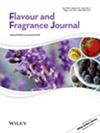Influence of Tea Type and Tea-Making Utensil Materials on the Sense of Smell and Catechin Content
Abstract
This study determined the catechins content in tea brewed in utensils made of different materials using high-performance liquid chromatography (HPLC). The effects of tea types, utensil materials, and catechin concentrations on the blind smell test of assessors were investigated through an experimental survey. The results showed that the assessors believed that unfermented green tea had a higher catechin concentration than partially fermented oolong and fully fermented black teas. They also believed that stainless steel utensils would affect the catechin content in green, black, and oolong teas to the greatest extent. The experimental results showed that the highest catechin concentration was found in fully fermented black tea and that the catechin content may be increased in tea made in food-grade silica gel containers. Assessors with a tea-related occupational background were more likely to smell the floral aroma of green tea. The floral aroma was the most pronounced at lower than at higher concentrations of catechins. The results of this study allow consumers to understand the benefits of tea and provide a reference for suppliers and sellers in tea-related fields and the tea market to increase the value of tea drinking and the output value of tea consumers.


 求助内容:
求助内容: 应助结果提醒方式:
应助结果提醒方式:


